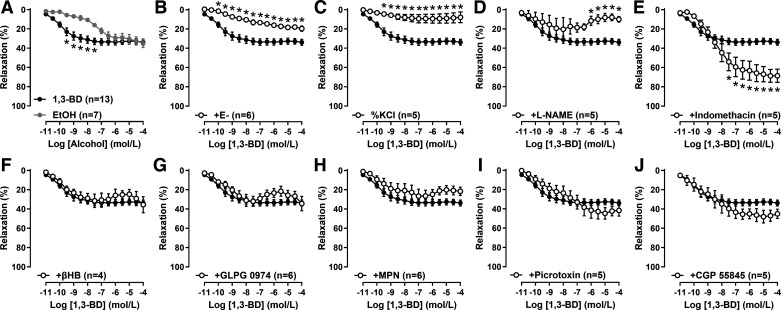Figure 5.
1,3-Butanediol (1,3-BD) mediates vasodilation via potassium channels and nitric oxide synthase, but not cyclooxygenase-derived products, free fatty acid receptors, or γ-aminobutyric acid (GABA) receptors. Concentration-response curves to 1,3-BD and ethanol (EtOH) in mesenteric resistance arteries from Wistar-Kyoto rats (A). Some concentration-response curves to 1,3-BD were performed in arteries with the endothelium denuded (E−; B), contracted to potassium chloride (KCl, 60 mmol/L), as opposed to phenylephrine (10 μmol/L; C), incubated with Nω-nitro-L-arginine methyl ester (L-NAME; 100 μmol/L; D), indomethacin (10 μmol/L; E), β-hydroxybutyrate (βHB, 10 μmol/L; F), GLPG 0974 (10 μmol/L; G), mepenzolate bromide (MPN, 10 μmol/L; H), picrotoxin (10 μmol/L; I), or CGP 55845 (10 μmol/L; J). Data are presented as means ± SE; n = 4–13. Two-way ANOVA: *P < 0.05.

